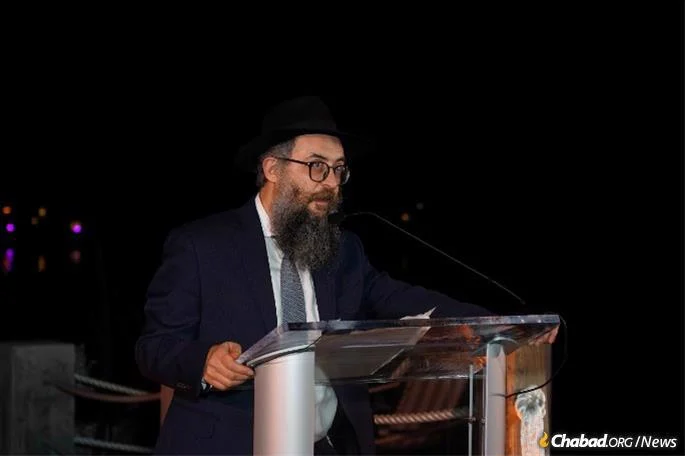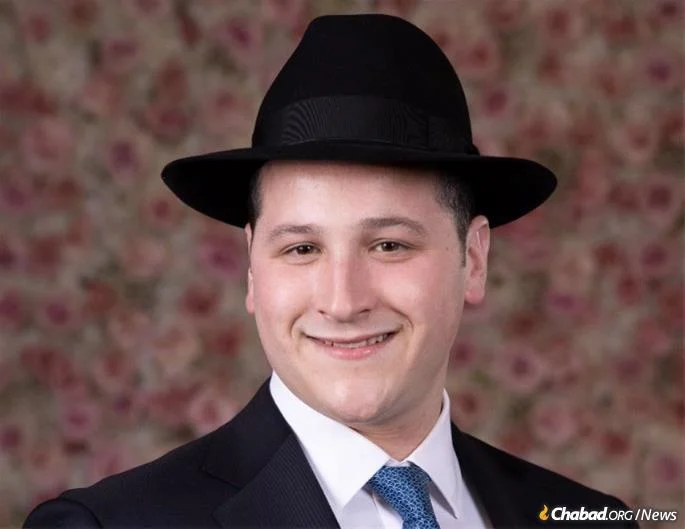A year after Yossi Kohn lost his life in the Meron tragedy, a group of prominent individuals from Lakewood joined forces with Lubavitchers to launch a campaign to build the first mikvaos in Idaho and Wyoming.
By Menachem Posner – Chabad.org
Everyone who encountered Yossi Kohn remembers his smile.
Even after he lost his father to a car crash at the age of 7, he continued to bring joy to others, greeting newcomers in his yeshivah, making others comfortable and putting their well-being before his own, say family members.
And he smiled in the final moments of his life as well.
Minutes after the 22-year-old prayed at the resting place of Rebbi Shimon bar Yochai on Lag BaOmer one year ago, he found himself among the first of 45 victims to be knocked down by the crushing crowd. Laying face down with many more piled on his back, he summoned his strength to lift his body up so that young Shmuel Chayut, who was pinned under him, would be able to breathe and survive with minor injuries.
“We were under everyone,” recalled his father, Avigdor Chayut, in a letter to Kohn’s mother, Chaya Gitty Kohn. “ … in those moments, he thought about the one beneath him. I shouted to Yossi, ‘Is everything OK?’ Yossi was smiling and he said, ‘K, OK.’ It was because of that smile that Shmuel and I could recognize him among the pictures of the victims.”
And even in his passing, he is surely smiling with pride observing the broad and diverse group of Jews who have come together to build two mikvahs in his memory—one in Boise, Idaho, and the other in Jackson Hole, Wyo.
Crucial to the function of the Jewish family, the mikvah is considered the bedrock of Jewish life, and its construction is considered more important than that of a synagogue.
In 1975, the Rebbe launched a campaign to educate people about the mitzvah of Family Purity and to build mikvahs all over the world.
In the ensuing decades, hundreds of mikvahs have been built—from Bogota to Budapest and from Pittsburgh to Johannesburg.
But the Jewish locals and visitors in Idaho and Wyoming still need to travel more than 300 miles, at times through blinding snow on winding mountain roads, to use the mikvahs in Salt Lake City, Utah, and Bozeman, Mont.
And it is these two states that will now benefit from a mikvah in Yossi’s memory.
At a recent fundraising event, Chaya Gitty Kohn, who is a middle-school principal at the Hebrew Academy of Cleveland, spoke with poise and faith about the pain of missing her son and receiving G‑d’s will with love.
“The hardest part is accepting the loss of his potential … ,” she said. “I eagerly awaited and looked forward to watching what he would accomplish—all the people he would touch, the family he would build, which is why this project is so meaningful to us. A mikvah represents potential. It symbolizes the future of the Jewish nation.”
As Kohn set about searching for potential mikvahs to sponsor in her son’s memory, she confided in a childhood friend, who also began researching communities in need of mikvahs.
As the pair became interested in Wyoming and Idaho, the only two Western states not to have a mikvah, they were surprised to learn that the friend’s husband, who often donates anonymously, had already committed to become the lead donor toward the two mikvahs.
During this past year, they rallied friends and benefactors, held meetings and raised awareness.
And when the friend passed away suddenly this winter, her three children picked up where their mother had left off, leaving no stone unturned in their effort to raise the funds to build the mikvahs.
Rabbi Mendel and Esther Lifshitz founded Chabad in Idaho in 2004 and promptly set about building a thriving Chabad center and recently set up their permanent Chabad House, which has ample room in which the mikvah will be built. With drawings and permits in place, the couple hopes to break ground in a matter of weeks.
Chabad’s permanent presence in Wyoming came in 2007 when Rabbi Zalman and Raizy Mendelsohn moved there with their infant daughter. They, too, have purchased land in a central location and are currently obtaining permits for the mikvah they hope to build in the coming months.
Speaking at the same fundraising event, Rabbi Aaron Kotler, president emeritus of Lakewood’s Beth Medrash Govoha (BMG) spoke about how he was personally inspired to become a member of the campaign’s executive committee—together with Rabbi Pinchos Lipschutz, publisher of Yated Ne’eman, and Rabbi Shalom Mordechai Rubashkin—after observing the trailblazing work Chabad emissary couples far from the centers of Jewish American life.
“I see it every day,” said the rabbi, who spends significant time in Park City, Utah, where he is involved with the local Chabad House, directed by Rabbi Yudi and Devori Steiger. “Jews walk in … and they see an authentic Yid who is not trying to be anything else except to live authentic Judaism, there is nothing more powerful than that.”
To participate in the campaign and help perpetuate the memory of Yoss Kohn, visit charidy.com/odyosefchai
Reprinted with permission from Chabad.org.




Beyond the memory of Yossi Kohn, what I see here is a beautiful collaboration of Chassidim and non (openly) Chassidim. It warms the heart. Kein Yirbu